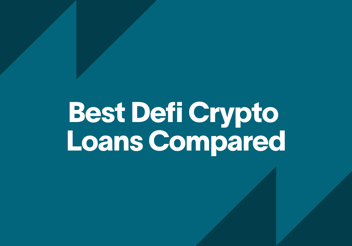Stablecoin Yield Farming: Is It Worth It?

If you’ve been looking for ways to earn passive income from your stablecoins, you’ll likely have heard of yield farming. But what exactly is it, and is it worth it? This blog will demystify stablecoin yield farming, exploring its potential and risks. We'll help you navigate this space, so you can maximize your returns while managing risks.
What Are Stablecoins?
Stablecoins are a type of cryptocurrency designed to minimize price volatility. Their core purpose is to offer a stable value, which is often lacking in the more familiar cryptocurrencies like Bitcoin or Ethereum. They serve as a practical medium for everyday transactions, enabling crypto-based purchases, salaries, and other regular uses.
Their stability is achieved by anchoring, or 'pegging', their value to more stable and traditional assets.
The pegging of a stablecoin can be to various assets such as:
Fiat Currencies
The most common peg is to fiat currencies like the US dollar, Euro, or Yen. This tie to a real-world currency aims to maintain a consistent value, typically on a 1:1 ratio. For example, one stablecoin pegged to the US dollar strives to maintain its value equivalent to one dollar.
Commodities
Some stablecoins are pegged to the value of commodities like gold or oil. This provides an alternative for investors to indirectly invest in these commodities through the crypto market.
Other Cryptocurrencies
A less common approach is pegging to other cryptocurrencies in a way that aims to balance and stabilize value.
Read more: Stablecoin Lending: The Ultimate Guide
Types of Stablecoins
Stablecoins can be classified based on their backing assets:
Fiat-Collateralized Stablecoins
These are backed by fiat currency reserves. For every stablecoin issued, there's an equivalent amount of fiat currency held in reserve.
Read more: USDT vs USDC
Commodity-Collateralized Stablecoins
These are backed by other physical assets like gold. They provide a way to invest in commodities digitally.
Crypto-Collateralized Stablecoins
Backed by other cryptocurrencies, these are more complex and often involve over-collateralization to account for the volatility of the backing crypto assets.
Algorithmic Stablecoins
These don't have any collateral but use an algorithm to control the supply of the stablecoin, increasing or decreasing it to maintain a stable price.
What is Stablecoin Yield Farming?
Stablecoin yield farming is an investment strategy that involves lending or staking stablecoins in decentralized finance (DeFi) platforms to earn rewards or interest. This approach makes the most of the stability of stablecoins while offering higher returns than traditional savings accounts.
Stablecoin yield farming is like putting your cryptocurrency in a special online savings account (called a decentralized finance, or DeFi, platform) to earn more digital assets over time.
.png?width=1800&height=1260&name=How%20to%20Earn%20Interest%20on%20Crypto%20(2).png)
Here's how it works:
You lend or "stake" your stablecoins by putting them into a DeFi platform. It's like depositing money in a bank, but this is all done digitally and with cryptocurrency.
In return for lending your stablecoins, the DeFi platform pays you. This payment is often higher than what a regular bank would give you for keeping your money with them.
Since stablecoins are less likely to change in value suddenly (like other cryptocurrencies might), this method of earning interest is seen as a bit safer while still offering a chance to earn more compared to traditional savings.
Smart Contracts
You’ll come across this term often in yield farming. Smart contracts are self-executing contracts with the terms of the agreement between buyer and seller directly written into lines of code. They run on blockchain networks, like Ethereum, and are immutable and distributed, meaning they operate without the need for a central authority or external enforcement mechanism.
What you need to know:
-
Smart contracts automate the process of yield farming. They allow users to stake or lend their stablecoins (like USDT, USDC, DAI) in a decentralized finance (DeFi) protocol and earn interest or other rewards automatically.
-
They facilitate interactions with various DeFi protocols. For example, a smart contract can automatically move stablecoins between different lending platforms to maximize yields.
-
Smart contracts can include mechanisms for risk management, such as automatic liquidation to maintain collateralization ratios in lending platforms.
Advantages and Disadvantages of Stablecoin Yield Farming
Advantages
- High Returns
Just like some bank accounts give you interest, stablecoin yield farming can give you returns, often at a higher rate. This is because DeFi platforms might offer better rewards than traditional banks.
- Comparative Stability
Stablecoins are like the steady ships in the rough sea of cryptocurrencies. They don't usually go up and down in value as much as other cryptos like Bitcoin. This stability is a big plus for yield farming.
- Low Volatility
With stablecoins, you don't have to worry too much about waking up to find their value has dropped drastically overnight. This lower risk of sudden value changes makes stablecoin yield farming a calmer experience compared to dealing with more unpredictable cryptos.
Disadvantages
- Market Volatility
Even though stablecoins themselves are stable, the DeFi world they operate in can be quite unpredictable. The value you get from yield farming can change quickly due to market ups and downs.
- Smart Contract Risk
In yield farming, you're relying on complex digital contracts (smart contracts). If there's a flaw or a security issue in these contracts, your investment might be at risk. It's like trusting a machine to keep your money safe; if the machine has a problem, your money could be in trouble.
- Transaction Fees and Trading Fees Risk
Doing transactions in the DeFi space can sometimes come with fees, like paying a small charge to move your cryptocurency or to participate in yield farming. These fees can add up and eat into the profits you're making, especially if you're making a lot of transactions.
Is Stablecoin Yield Farming Safe?
While stablecoin yield farming offers exciting opportunities, it's not without risks. The safety largely depends on the robustness of the DeFi platform and the smart contracts it uses. You should also be aware of the market dynamics and regulatory changes that could impact the DeFi sector.
Who is Stablecoin Yield Farming For?
Stablecoin yield farming is best suited for those who have a good understanding of the cryptocurrency market and are willing to take on a moderate level of risk. It may not be the best fit for conservative investors or those new to cryptocurrencies.
Best Stablecoin Yield Farming Alternative
If yield farming sounds too risky or complicated for you, Ledn offers a great alternative with its savings accounts. These accounts allow you to earn passive income with less risk than traditional yield farming.
Ledn's USD Stablecoin Growth Accounts
Ledn's stablecoin savings accounts, particularly its Growth Accounts, are an innovative way to earn interest on stablecoins. They are a way to hodl and earn up to 10% APY currently. The key features of this account are security, risk mitigation, transparency, client control, and trust - making them one of the most reliable ways to earn interest on USD stablecoins (e.g. USDC and USDT).
Security
The digital assets held in USD Stablecoin Growth Accounts at Ledn are mainly used to fund the platform's retail loan book, which has never experienced a loan loss. Therefore, the stablecoin deposits in these accounts are collateralized with Bitcoin or ETH posted by borrowers. This setup is a very secure way to earn yield on USD stablecoins.
Risk Mitigation
All of Ledn's Growth Accounts are ring-fenced. This means that as a client, you are only exposed to the credit risk of the counterparties that generate your yield. In the unlikely event of Ledn facing bankruptcy, your Growth Account will not be affected. Furthermore, Ledn only deals with the most reliable stablecoins, USDC and USDT.
Transparency
Ledn's Growth Accounts offer high levels of visibility into how your yield is generated. You can regularly view the collateralization levels and observe how Ledn uses stablecoin deposits via monthly Open Book Reports or check its Proof of Reserves.
Control
Clients have the option to opt-in and out of yield. You can move deposits between Growth Accounts (which generate yield) and no-yield Transaction Accounts at your convenience.
Trust
As a client, you benefit from Ledn's stringent vetting, underwriting, and risk management policies that guarantee a safe and secure saving experience.
Watch: How does Ledn generate interest on its USD Stablecoin?
Conclusion
Stablecoin yield farming is an exciting, albeit complex, opportunity in the world of cryptocurrency. Is it worth it? The appropriateness of yield farming as an investment strategy depends on your risk tolerance, investment goals, and the evolving landscape of DeFi. For those looking for a simpler approach, Ledn’s USD stablecoin Growth Accounts are a transparent and reliable alternative.
Ready to earn interest on your stablecoins? Start growing your digital assets today.
Sponsored by 21 Technologies Inc. and its affiliates (“Ledn”). All reviews and opinions expressed are based on my personal views.




